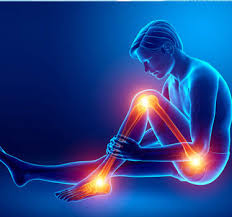Rotator cuff rupture
The rotator cuff is the complex of the four muscles (with the respective tendons) which contributes to the movement of the shoulder joint in the various planes of the space and which keeps the joint between the scapula and humerus (the bone that belongs at the upper part of the arm).
The "lesion" of the rotator cuff is the partial or complete rupture of one (or more) between the tendons that constitute it.
What is rotator cuff tear?
The rupture of the rotator cuff is a widespread condition, especially in elderly patients; in case of breakage that can be both partial and complete, generally, both pain and functional limitations are present. Dr. Prakash M Doshi, who has 30 years of experience and works at Nanavati Super Speciality Hospital, is the best orthopedic surgeons in Mumbai.
What are the causes of rotator cuff tear?
The rupture of the rotator cuff can occur either due to a traumatic event, as a result of a wrong movement, an excessive load or an impact, or by degenerative, more slowly, due to continuous stress of the joint or as a result of aging-induced degeneration.
More frequently it is a combination of these two elements that lead to tendon rupture: due to degenerative phenomena, a tendon "thinning" phenomenon starts, which can then evolve either spontaneously or following trauma or even trivial efforts in a complete rupture.
What are the symptoms of rotator cuff tear?
The rupture of the rotator cuff is usually characterized by pain in the front part of the shoulder, especially if the cause of the break is of a traumatic nature. The patient feels pain, which can also be radiated to the whole arm, especially when it makes movements such as lifting the elbow over the shoulder or resting it on a surface such as the arm of an armchair or the surface of a table or desk.
When the rupture derives from a chronic condition, the pain manifests itself with varying intensity over time and is often present at night; it is also accompanied by greater difficulty in making movements, which have a more limited radius, and the impossibility of lifting even modest weights.
Diagnosis
The rupture of the rotator cuff is usually diagnosed by physical examination, followed by confirmation by an MRI scan.
The x-ray, however, although it does not show the rupture, can be used to find any alterations affecting the skeletal components.
Treatments
Often the surgical option is not the first choice for the treatment of rupture of the rotator cuff, as it is possible to have relief the symptoms even with rehabilitative therapies.
The surgical approach is often considered as the first option only in cases of total rupture in young patients when it is suspected that it may lead to an alteration in the conformation of the joint itself.
Surgical therapy
When there is an indication for a surgical approach, due to the negative outcome of non-surgical treatments (usually not accessible before 8-12 weeks) or other factors, the specialist may decide to operate.
Arthroscopy, in this case, is the most used intervention as day surgery, under regional anesthesia and through three small "little holes" through the skin leading to the direct visualization of the lesion and its repair.
Surgery has proven effective in therapy for rotator cuff tear, although the pathology may recur throughout the life of the same individual. In very severe cases it is possible to replace a part or the entire joint with a prosthesis.
After surgical therapy, whatever the approach adopted, a rehabilitation procedure is usually necessary, divided into three phases:
First phase: immobilization of the arm for about 4 weeks, to allow the muscle tissue to repair itself.
Second phase: assisted physiotherapy, to recover the movement of the joint (about 4-8 weeks).
Third phase: strengthening of the muscles through assisted physical exercise and no (about 8 weeks).
Cost of rotator cuff surgery in India is USD 3200 with 2 days stay in hospital and 7 days stay in all.






